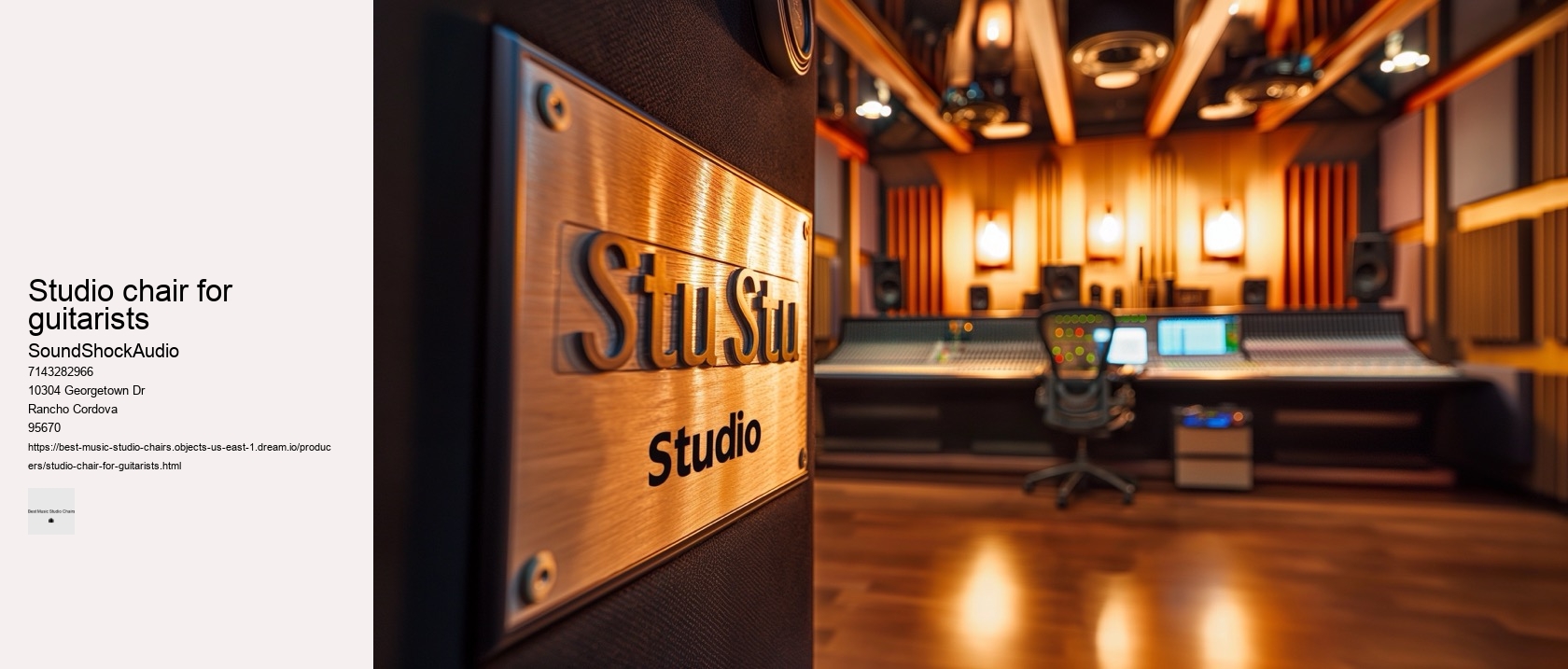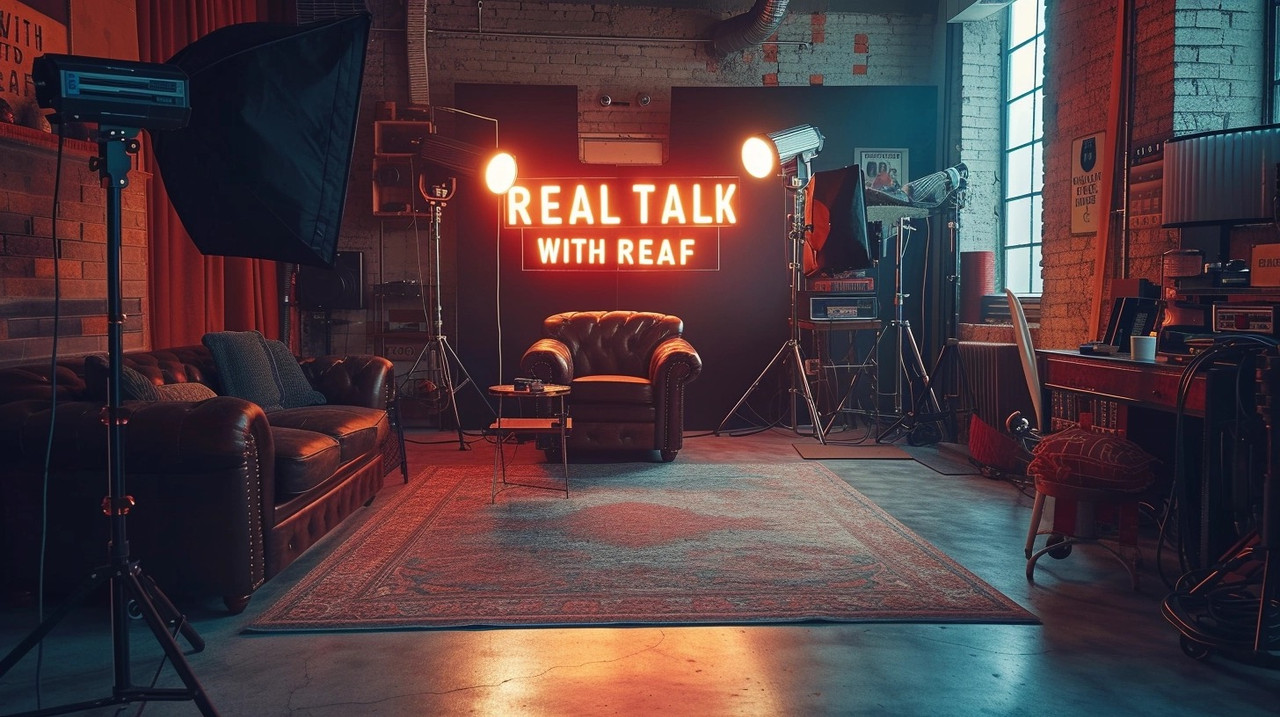

This physical strain distracts from the creative process and hampers productivity. When seated upon such an exalted perch, distractions fade away like distant echoes; all that remains is you intertwined with your craft—unified in purposeful creation. Imagine a chair that doesn't merely exist within the studio but integrates seamlessly into the producer’s workflow. Ergonomic chairs encourage a sitting posture that aligns your back, neck, and hips, reducing strain on these areas. Imagine a chair designed with the precision of a finely tuned instrument—a seat that harmonizes with your body’s movements as seamlessly as a maestro conducts his orchestra.
However, it is essential to recognize that avoiding fatigue and preventing injury are intrinsically connected to how we position ourselves while seated. studio workstation However, this seemingly inconsequential choice can be pivotal to both the comfort and productivity of any musician or producer during long hours of work. Some creatives prefer firm seats that encourage alertness; others lean towards plush cushions that offer cloud-like comfort under their form. Whether sleek lines sing harmonies with minimalist setups or plush cushions echo the opulence of traditional spaces, beauty must never be sacrificed at utility's altar.
Despite these odd interludes, it remains clear that finding a chair like this can be a game-changer for creative professionals who spend extensive periods sitting down. Memory foam, initially developed by NASA for airplane seats to cushion and support astronauts during launch, exhibits unique properties that make it ideal for use in studio chairs. Before a single note resonates through the studio, seasoned veterans invest time in prepping their workspace. Resourceful musicians could revamp an existing chair by adding cushions or making other modifications to enhance its comfort level without spending much money.
Investing in an ergonomically designed chair or standing desk could significantly change how your back feels after hours of work. Each cushion whispers secrets of cloud-like serenity to weary backs bent over mixing consoles. Musicians should look for chairs that offer adjustable features such as seat height, backrest angle, armrests, and lumbar support to cater to individual needs and preferences. It's not merely furniture; it’s an indispensable tool ensuring endurance through session marathons where every note counts.
Consequently, this diminishes the risk of developing chronic pain which could prematurely end or interrupt prolonged studio sessions. So then what brand or model holds this coveted title? This is where ergonomically designed chairs come into play. Its silhouette whispers sophistication while its build promises enduring reliability.
By selecting chairs that offer optimal support and adjustability, professionals can enhance their practice sessions and performances, ensuring they stay attuned both physically and mentally. Users can adjust nearly every aspect of their chair so it feels less like office furniture and more like an extension of oneself—a symbiotic relationship between artist and instrument enhancing focus rather than detracting from it. But again, ergonomics take a backseat here.
When we think about audio work, our minds gravitate towards high-quality monitors, powerful computers, and an array of sophisticated plugins. Functionality aside, aesthetics play no minor role in selection. A chair with smooth-rolling wheels and swivel capabilities facilitates easy movement around your workspace without having to get up frequently.
Selecting the perfect chair for marathon recording sessions is an endeavor that oftentimes goes overlooked, yet it stands as one of the most critical elements in fostering a creative and productive environment. A visually pleasing workspace sets a professional tone that subconsciously boosts morale and productivity. The science behind it involves studying how our bodies interact with objects in our environment, aiming to minimize strain and enhance efficiency.
As ergonomic research continues pushing boundaries alongside technological innovations in materials engineering; studio chair designs will undoubtedly evolve even further—making today's game-changing features tomorrow's standards. Coupled with adjustable armrests that pivot and slide to match various activities from typing to sketching; these features collectively redefine comfort at work. One exemplary model is the Herman Miller Aeron Chair.
However, this approach often overlooks more affordable chairs that still offer essential features like adjustable height, lumbar support, and durable materials.


Thirdly, examine materials as if they were genres of music. Its innovative features—temperature regulation, durability, hypoallergenic properties—and potential for enhancement with additional technologies make it a standout material that has truly transformed our expectations for comfortable seating solutions in creative spaces. Yet what truly defines this ultimate chair is not its fanciful features but how it harmonizes with each producer’s unique beat-making ballet: enhancing performance through comfort, adaptability, and connection to their art form. For those who master soundscapes daily, investing in a high-quality chair isn't mere luxury—it's an essential component of their craft.
Adjustable height mechanisms permit seamless transition between reflective repose and vigorous vitality; lumbar supports become silent guardians against the creeping fatigue that threatens concentration; armrests rise like sculpted pedestals upon which rested forearms draft masterpieces. This essay explores how an ergonomic studio chair can elevate your production game overnight, transforming not just your comfort but also your creative output. Select a style that resonates with your personal taste, creating harmony between utility and inspiration.
Chairs with variable height settings allow you to align your ears with monitor speakers accurately—this aids in achieving precise stereo imaging and frequency response during critical listening periods. Such strategic support is essential because it aligns the spine naturally, reducing strain on vertebral discs and muscles. Imagine a chair—an ordinary concept turned extraordinary by ergonomic wizardry—a throne for sound architects tirelessly weaving sonic tapestries through night's quiet hours.
Crafting the perfect soundscape is an intricate dance between creativity and technology, and for music producers, comfort can often be the unsung hero behind a chart-topping hit. Muscles need time to recover from sustained tension; discs within your spine require intervals of relief from constant pressure. Chairs without this fundamental adjustment could lead to discomfort and health issues over time.
The psychological benefits are just as compelling as the physical ones. These elements are crucial in determining how well a chair stands up to constant wear and tear. Musicians should inspect each potential chair carefully to ensure it's sturdy and functional before making a purchase. Does sleek modern design quicken your heart?

Whether for painter's caverns, minstrel nests or weaver’s lairs, every stool must juggle twin enchantments." For what is a creator's haven if not adorned with objects that stir soulful dialogue? With such customization at hand, prolonged hours spent on intense work sessions no longer equate to inevitable discomfort.
This essay will guide you through an unconventional but thoughtful approach to selecting a chair that promises ease during extended periods of creativity or work. Our bodies are designed for motion; however, during lengthy mixing sessions, we often remain static in a single position.
While it may seem improbable to score a high-quality chair through these channels, many people have found incredible bargains on items barely used by their previous owners.
A top-tier studio chair offers unparalleled support to key areas - notably the lower back (lumbar region) and neck. This decision is not merely about comfort; it also encompasses health considerations and productivity implications. In the ever-evolving landscape of furniture design, particularly in the realm of studio chairs where comfort and functionality are paramount, one innovative material stands out from the rest: memory foam. Another significant feature is lumbar support adjustability. Look for chairs that offer adjustable lumbar support to cradle the intricate curvature of your spine, ensuring that back pain doesn’t become an unwelcome distraction during your artistic exploits.
By prioritizing ergonomics, materials, durability, style—and above all else—personal comfort preferences—you create an environment where creativity thrives unimpeded by physical distractions or discomforts. Prioritizing ergonomics and comfort ensures that you can endure those marathon sessions without sacrificing your physical or mental well-being — allowing creativity to flow unhindered by bodily distractions. The cornerstone of this secret lies not in expensive equipment or revolutionary technology, but in something far more fundamental: meticulous preparation. Mobility within the workspace is another essential aspect.
Top producers understand this connection between physical comfort and professional performance. A chair should offer versatile adjustments – from seat height and tilt to lumbar support and armrest positioning – ensuring that it can conform to various body types and preferences. Firstly, ergonomics are crucial. cordless This piece of furniture is designed with sustainability in mind, featuring LiveBack technology that adjusts dynamically to your movements.
Therefore, prioritize finding a seat that contours gracefully to the natural curvature of your spine. Lastly, don't underestimate personal preference's role—testing different chairs until you find 'the one' is crucial since everyone's definition of comfort varies widely. When exploring the vast realm of creativity, it might seem peculiar to consider that something as mundane as your seating choice could significantly impact your artistic endeavors. The design of the chair should support your body's natural posture, reducing strain on your back, neck, and limbs.
Yes, many individuals from Generation Z listen to Electronic Dance Music (EDM). This genre remains popular among younger audiences, particularly due to its strong presence at festivals, in online streaming platforms, and its integration into social media trends. Gen Z's engagement with EDM is also facilitated by the ease of access to digital music and the community aspect of EDM culture.
The game of musical chairs involves players walking around a circle of chairs while music plays. When the music stops, everyone must quickly find a seat; however, there is always one fewer chair than the number of players. The player left standing without a seat is eliminated from the game. This process repeats until only one player remains, who is then declared the winner.
The price of a good office chair can vary widely depending on features, ergonomics, materials, and brand. Generally, for a high-quality, ergonomic office chair that provides good support and adjustability, you can expect to pay anywhere from $200 to $1,000. Investing in a higher-priced chair often means better longevity and comfort, which can be worthwhile for something used extensively every day.
Joe Rogan uses the Human Touch Perfect Chair for relaxation and podcasting. Specifically, he has mentioned using the Human Touch PC-420 Classic Manual Plus Perfect Chair. This chair is known for its zero-gravity ergonomics, designed to reduce back pain and improve circulation, making it a comfortable choice for long podcast sessions or simply relaxing.